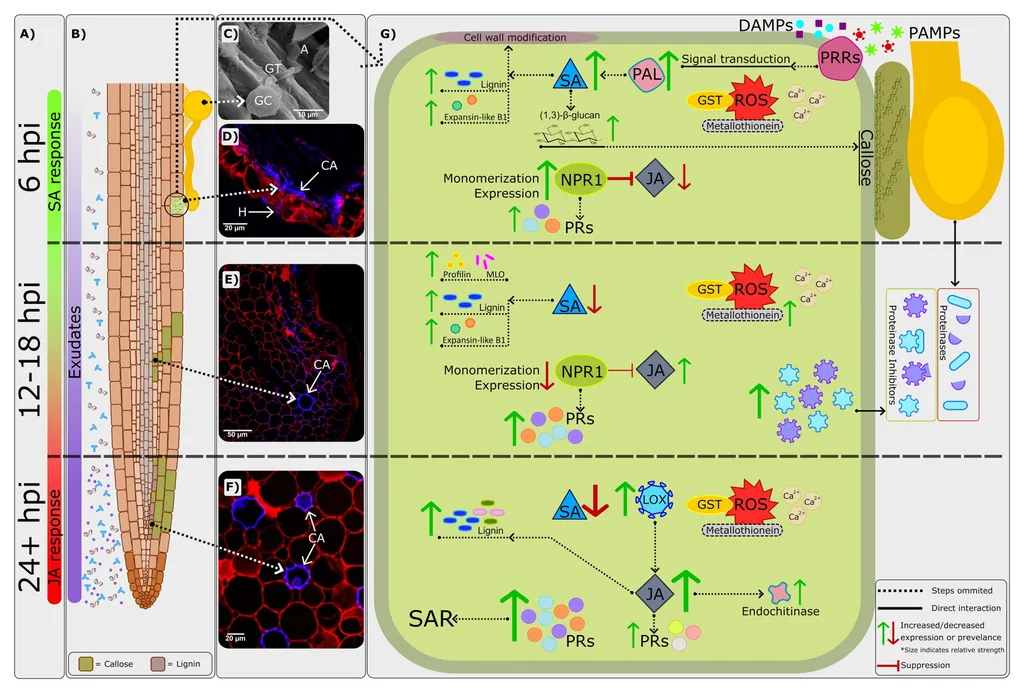In the relentless battle against Phytophthora root rot, a formidable foe to avocado orchards and a global threat to agriculture, a new study has shed light on the mechanisms behind one of the most effective chemical defenses: phosphite. Published in *Frontiers in Microbiology* (translated to English as “Frontiers in the Study of Microorganisms”), the research led by S. Ashok Prabhu, a researcher at the Hans Merensky Chair in Avocado Research at the University of Pretoria, South Africa, delves into how phosphite inhibits the notorious pathogen *Phytophthora cinnamomi*.
Phosphite, a salt of phosphorous acid, has long been a go-to chemical for managing *P. cinnamomi* in commercial avocado orchards. While its indirect effects—such as bolstering the host plant’s defenses—have been well-documented, the direct impact on the pathogen itself has remained somewhat of a mystery. Prabhu and his team set out to change that, using a technique called SWATH-MS (Sequential Window Acquisition of All Theoretical Mass Spectra) to analyze the proteomics of *P. cinnamomi* isolates treated with phosphite.
The study identified a specific isolate, GKB4, which is highly sensitive to phosphite, with an effective concentration (EC50) of just 27.9 μg/mL. By comparing untreated and phosphite-treated samples, the researchers found that phosphite significantly reduces the abundance of oxidoreductases—enzymes crucial for the pathogen’s growth and metabolism. “This suggests that phosphite directly targets these enzymes, disrupting the pathogen’s ability to thrive,” Prabhu explained.
But the findings don’t stop there. The study also revealed that phosphite disrupts the pathogen’s energy metabolism, affecting proteins involved in membrane transport and oxidative stress. Interestingly, the research identified an increase in putrescine biosynthesis, a polyamine that, when present in non-optimal concentrations, can be cytostatic or even cytotoxic—meaning it can inhibit or kill cells.
The study also highlighted the pathogen’s attempts to counteract phosphite’s effects, such as upregulating alternate bioenergetics pathways and antioxidants. However, these efforts appear to be ineffective, as the pathogen’s growth is still significantly inhibited.
So, what does this mean for the future of avocado farming and agriculture at large? Understanding the direct mechanisms of phosphite’s action could lead to more targeted and effective treatments against *P. cinnamomi* and other similar pathogens. “This research opens up new avenues for developing strategies that can better protect our crops and ultimately ensure food security,” Prabhu said.
Moreover, the study’s findings could have broader implications for the energy sector, particularly in the development of biofuels and other biotechnological applications. By understanding how phosphite disrupts the metabolism of *P. cinnamomi*, researchers may gain insights into similar processes in other microorganisms, potentially leading to more efficient and sustainable energy solutions.
As the global demand for avocados and other crops continues to rise, so does the need for effective and sustainable pest management strategies. This study, published in *Frontiers in Microbiology*, brings us one step closer to understanding and combating one of agriculture’s most persistent adversaries.

